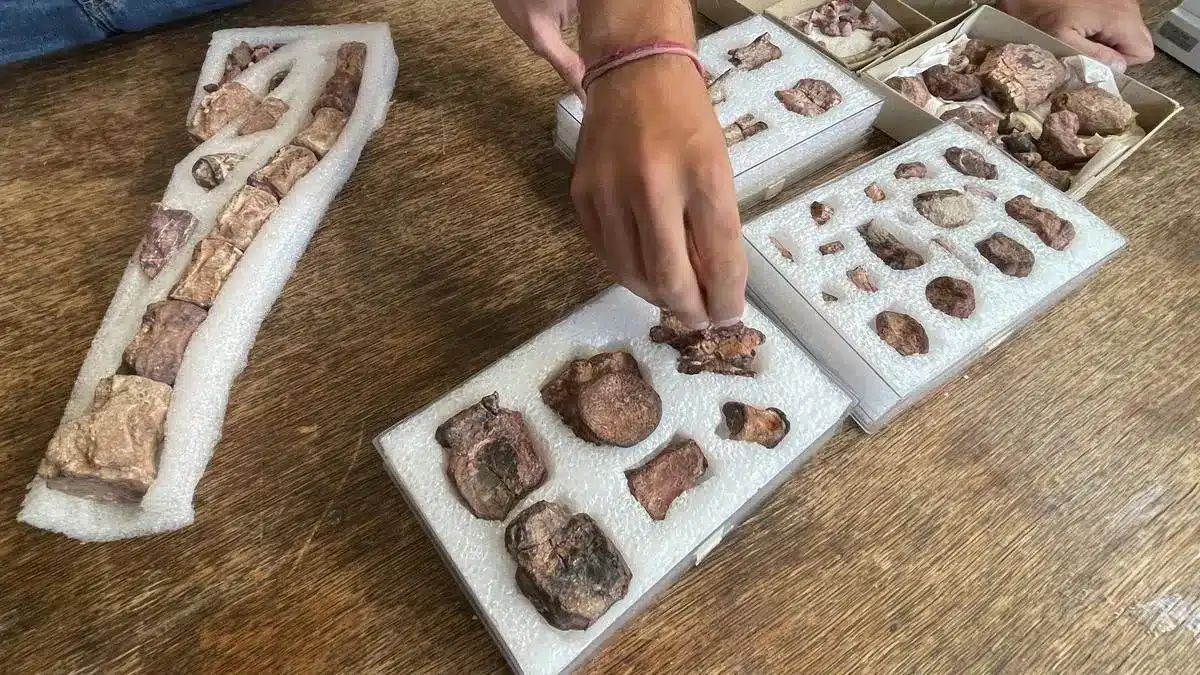About Chakisaurus nekul
- Its name derived from Chaki, which is a word from the Aonikenk language, of the indigenous Tehuelche people, which means “old guanaco”, a reference to a medium-sized herbivore mammal found in the region. Nekul means “fast” or “agile” in the Mapudungún language, of the local Mapuche people.
- It was a fast runner and lived about 90 million years ago in the Late Cretaceous period in present day Patagonia.
- It was found in the Pueblo Blanco Natural Reserve, in the southern province of Río Negro, an area rich in fossils where many mammals, turtles, and fish have been found along with other species of dinosaur.
- Studies of Chakisaurus yielded new findings indicating that it was a fast runner and had its tail curved unusually downward.
- This new species was a bipedal herbivore that among its most important characteristics had a tail that, unlike other dinosaurs, which was horizontal, had a downward curvature.
Q1: What is the Cretaceous Period?
The Cretaceous Period, in geologic time, is the last of the three periods of the Mesozoic Era. The Cretaceous began 145.0 million years ago and ended 66 million years ago. It followed the Jurassic Period and was succeeded by the Paleogene Period.
Source: Argentine scientists find speedy 90-million-year-old herbivore dinosaur
Last updated on June, 2025
→ UPSC Notification 2025 was released on 22nd January 2025.
→ UPSC Prelims Result 2025 is out now for the CSE held on 25 May 2025.
→ UPSC Prelims Question Paper 2025 and Unofficial Prelims Answer Key 2025 are available now.
→ UPSC Calendar 2026 is released on 15th May, 2025.
→ The UPSC Vacancy 2025 were released 1129, out of which 979 were for UPSC CSE and remaining 150 are for UPSC IFoS.
→ UPSC Mains 2025 will be conducted on 22nd August 2025.
→ UPSC Prelims 2026 will be conducted on 24th May, 2026 & UPSC Mains 2026 will be conducted on 21st August 2026.
→ The UPSC Selection Process is of 3 stages-Prelims, Mains and Interview.
→ UPSC Result 2024 is released with latest UPSC Marksheet 2024. Check Now!
→ UPSC Toppers List 2024 is released now. Shakti Dubey is UPSC AIR 1 2024 Topper.
→ Also check Best IAS Coaching in Delhi
























